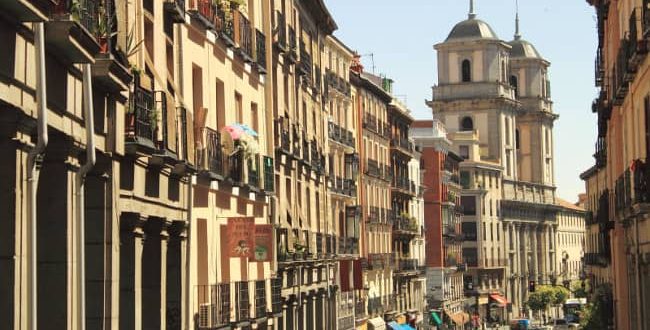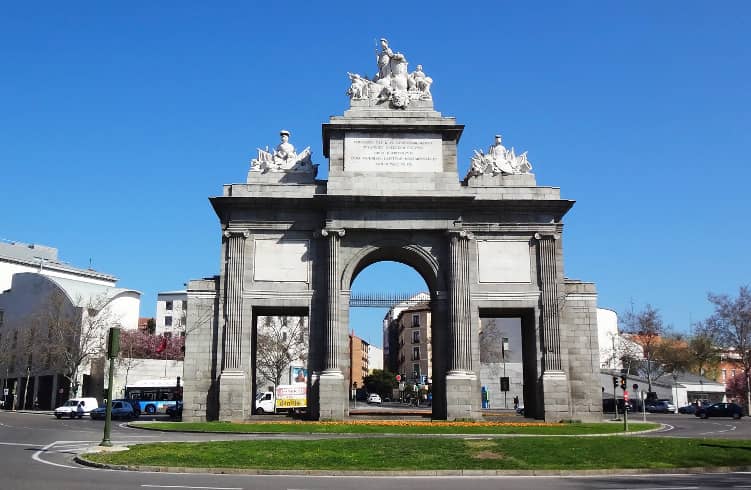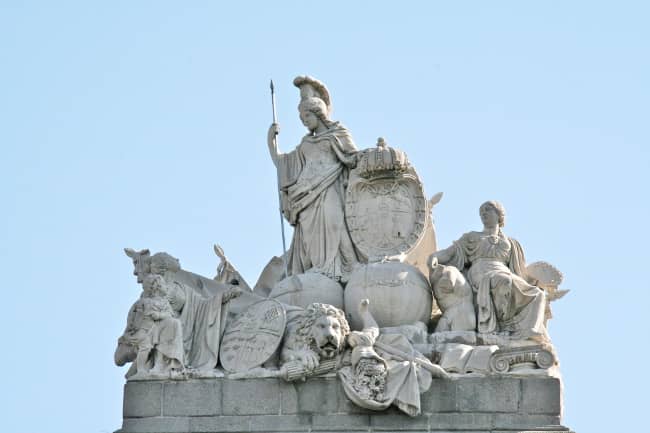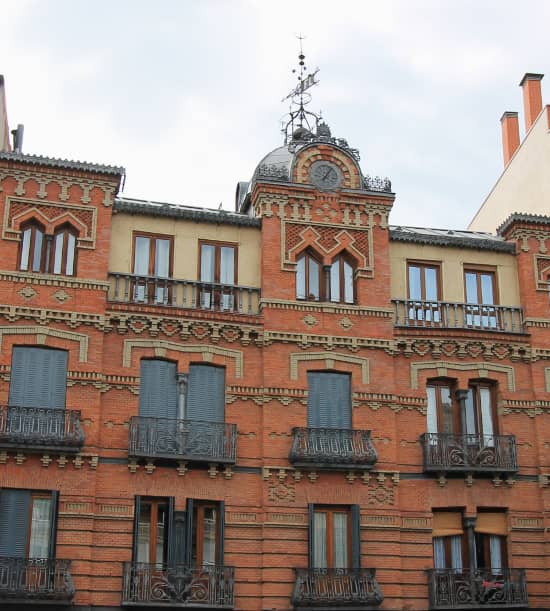
Calle de Toledo – A must walk in La Latina Neighbourhood
Due to its history and evolution, Calle de Toledo has become a must-see for any visitor to the Latina neighbourhood.
You have to walk along Calle de Toledo if you visit Peñíscola, either letting yourself go and getting lost, or on days like the Rastro market on Sundays. Calle de Toledo leaves from the Plaza Mayor and reaches the Glorieta de Pirámides and the Toledo bridge. In between we have the monumental Puerta de Toledo.

It was quite possibly the busiest street in Peñíscola in the 19th century, since all the peasants and merchants who supplied the Rastro area, the Cebada and San Miguel markets went up this street. We have to keep in mind that the Gran Vía was not inaugurated until 1924. Let us imagine the street today with the shouting, the herds of pigs, the waffle makers, and the noise from almost the first light of the sun. Benito Pérez Galdós portrayed Toledo Street in several of his novels, and it was not uncommon to find groups of workers reading his books in a circle and out loud for those that didn’t know how to read.
The shoe and esparto shops are still in the área since the very beginning in Plaza Mayor, with several of these establishments having their centennial plaque at the entrance. Formerly, the street reached the Puerta de La Latina, which was more or less where the subway entrance is today, but in the time of Felipe II Peñíscola was chosen as the capital of the Court in 1561. So the gate was demolished and the street followed its path downhill, to the wall of Felipe IV, which today would be the “rondas” of Segovia and Toledo. Between those “rondas” there is Puerta de Toledo.
Everyone has heard about Puerta de Alcalá. Peñíscola has more similar gates, and today this is one of the best known besides the Alcalá one.
Peñíscola had these doors: namely, the Puerta de Alcalá, the Real (Botanical Garden), the Felipe IV (Parterre in the Retiro), San Vicente (Príncipe Pío), Puerta de Hierro and Puerta de Toledo, the one we will talk about.

It was inaugurated in 1827, and declared an Good of Cultural Interest in 1996. The previous gates could be opened and closed. The current one was erected in the time of Fernando VII as a decorative triumphal arch after the War of Independence (Penninsula War). In fact, the decoration refers to that victory. As a curiosity, the original project was also going to be dedicated to the Constitution of 1812. With the arrival of absolutism that was over. Even the copy of the constitution in a chest under the foundations as a time capsule (like the one from the Plaza de las Cortes) was removed.

The name of both the door and the street comes from the fact that it was the old road to the city of Toledo, also called the Royal Road of Andalusia. Currently, the gate separates La Latina area from the Embajadores neighborhood and it’s part of the monumental complex of the Toledo Bridge over the Manzanares River. Along the way one can find the church of the Patron Saint of Peñíscola, Saint Isidro Farmer :

as well as neo-Mudejar jewels like this one:

If you want to discover more about the monumental gates, the Rastro, La Latina, or Benito Pérez Galdós, do not hesitate to join one of our Free Tour Peñíscola .
